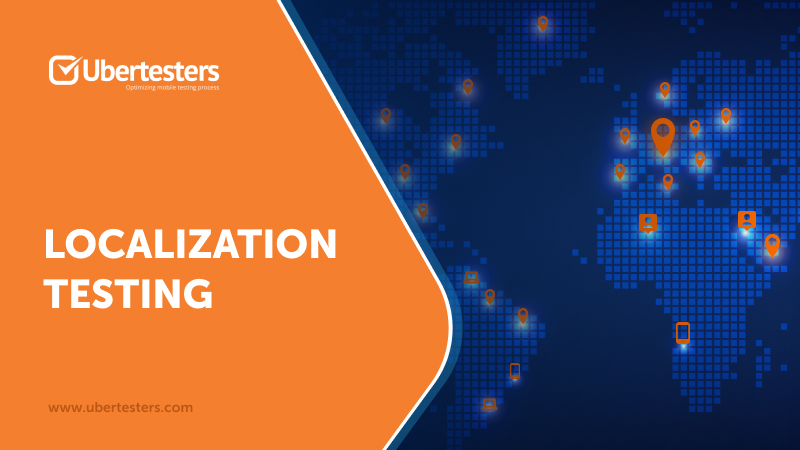Why Do Companies Use Localization Testing?

The process of quality assurance in any business always has lots of stages and requires performing various types of tests. Many of them can be executed by the company’s QA team. However, many corporations need their products and services to be tested in real test environments outside their home country. For example, in case you’ve developed a mobile app that will be used by customers from different countries, you will need to test whether the versions in various languages are flawless and have no slang issues. Further, it should be checked if it behaves according to the local culture or settings. Lastly, you need to have access to the most popular devices used in that country to make sure your app is fully compatible with those specific devices. This is exactly where localization testing takes place.
The checklist for localization testing
As a rule, test cases for localization are aimed to check numerous features:
- Compatibility. The product or service should be fully compatible with both hardware and software used in a particular country or region. Checking hardware compatibility is one of the vital features of this type of testing (different real popular devices and browsers in the tested country/region).
- UI. The program’s interface should be comfortable and understandable for the locals, as well as conform to their culture, traditions, and common views. The localized user interface is among the key parameters for making the program or service successful in a specific region.
- Language. All the labels, titles, and text used in the app should be carefully translated. The data displayed to the local users should be shown only in their native language and symbols.
- Design. The translated text should not overlap or out of its frames or fields.
- Help. The manuals and user guides should be opened properly and be available to all the users regardless of their location.
- Other features. Among the other features checked by a QA tester are the correct date and time format displayed in the app, the availability to use hotkeys, as well as the usage of filters and search fields. Currency should also correspond to the locale and be displayed correctly.
The process of localization testing
The process of QA of a new app, product or service can be divided into several steps. Here is a list of stages most companies come through to succeed in their testing efforts.
Preparing for the localization test. At this stage, the developer collects all the required documents, manuals, glossaries, and other product details required by the QA professional for performing tests. This phase can also be called ‘Setting up the test environment’.
Understanding the needs. This step includes analyzing the target audience, their customs, language, preferences, and financial habits. The company also needs to set up precise business goals for a particular region.
Checking the product’s appearance. The localized media files should be of excellent quality, while the localized product itself should be as top-notch as its original version.
Checking functionality. This stage is one of the most extensive since it requires testing a large number of features. This includes font support, the display of correct currency, payment methods, date and time format, and more.
Local-specific tests. These are tests designed to make sure that all the product’s components are adapted to a particular region. Local-specific tests include checking the following options and parameters:
- Whether the product meets the requirements and has all the needed licenses for operating on the local market
- Whether the formats of phone numbers are displayed correctlyWhether the currency conversions are made according to the current exchange rate
Checking language-related aspects. At this stage, it is important to check whether all the letterings and titles are translated correctly. All the texts should be translated by professionals and needs to be precise and error-free. Any grammar or spelling mistakes are not acceptable. Moreover, the translated text should always meet the cultural norms of a particular region.
Analysis and result. The last stage of the localization is to collect all the information provided by crowd testers and analyze the results. Using different analytical tools, checking conversion rates, and tracking the received data are among the most important activities for making further marketing decisions.
Hardware testing in local markets. There is nothing new that the users in each country and region have certain particular preferences. For example, users from North America are widely using iOS gadgets, while Europeans usually prefer Android. There can also be unique local devices that are used only in a certain part of the world (gadgets in China, India, etc.) This means hitting the foreign market requires detailed testing on the local devices that are the most popular in a chosen region. The most flexible and affordable way to test your product on all these unique devices is by using Crowd Testing services. You get access to thousands of real testers with the real required devices, that are located in your target country and they can test the products for you. This is the best way to make sure your app is fully compatible with the unique devices of the target country.
Advantages of localization testing include:
- Makes the process of testing more scalable
- Allows to detect weak points of the product before its launch
- Gives a detailed and clear picture of how the product works in the real environment in a specific region
- Saves time and reduces the costs
- Allows making a more detailed financial prognosis
Disadvantages of localization testing:
- Requires a local tester who will perform the tests in a specific region
To sum up, localization is a high-powered solution for those companies that are focused on entering new markets. This type of testing allows detecting all the bugs, errors, and vulnerabilities that might occur when the program is used by the locals. Moreover, different virtualization software will not give you enough relevant information about your product’s performance in the local markets. Only crowd testing services performed by real QA experts, with real devices, in different locations, will provide you with the most detailed data about your app or service and allow you to get real valuable local user feedback. Looking for professional crowd testers for your product? Ubertesters is always ready to help. Please contact us at sales@ubertesters.com

